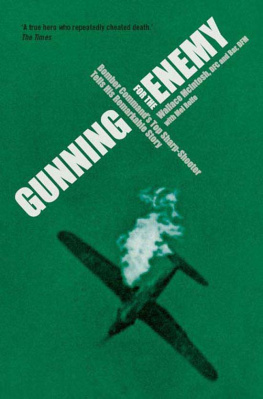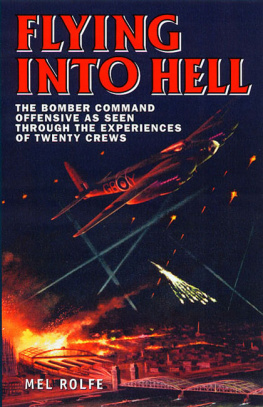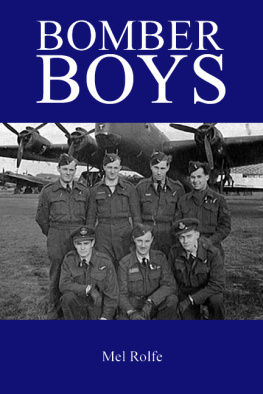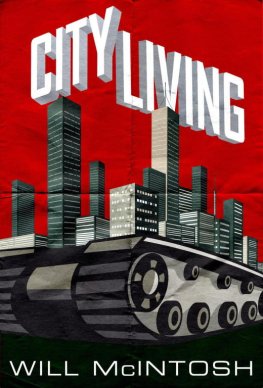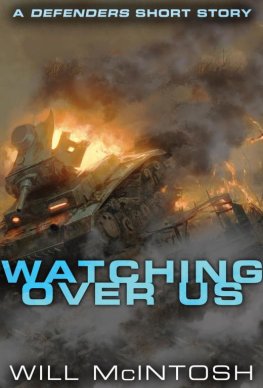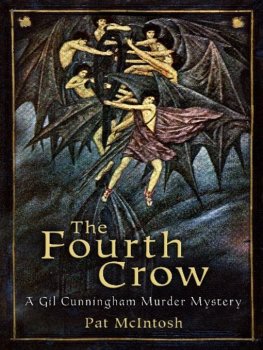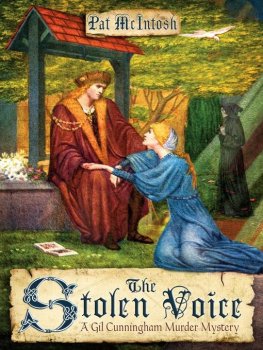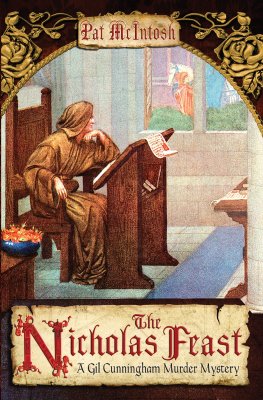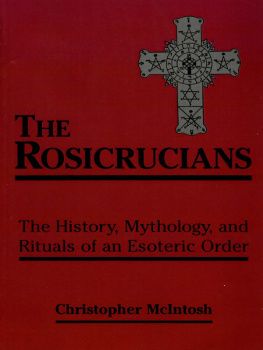OTHER BOOKS ABOUT BOMBER COMMAND
BY MEL ROLFE PUBLISHED BY GRUB STREET:
To Hell And Back
Hell On Earth
Flying Into Hell

Published by
Grub Street
The Basement
10 Chivalry Road
London SW11 1HT
Copyright 2003 Grub Street, London
Text copyright 2003 Mel Rolfe
British Library Cataloguing in Publication Data
Rolfe, Mel
Gunning for the Enemy: Wallace McIntosh, DFC and Bar, DFM
1. McIntosh, Wallace. 2. World War, 1939-1945 Aerial operations, British 3. Airmen Great Britain Biography
I. Title
ISBN 1 904010 45 8
Digital Edition ISBN 9781908117502
All rights reserved. No part of this publication may be reproduced, stored in a retrieval system, or transmitted in any form or by any means, electronic, mechanical, photocopying, recording, or otherwise, without the prior permission of the copyright owner.
Typeset by Pearl Graphics, Hemel Hempstead
Printed and bound in Great Britain by Biddles Ltd, Guildford and Kings Lynn www.biddles.co.uk
In memory of Christina McIntosh
CONTENTS
ACKNOWLEDGEMENTS
I thank Wallace McIntosh for his unwavering patience in dealing with my innumerable questions, many of which I asked in infuriatingly different ways several times in an effort to winkle out further bits of important information I believed to be lurking in the more remote corners of his memory.
The following all contributed information or help in my preparation of Gunning For The Enemy: Pete Barber, Peter Bark, Dr John Cook DFC, Jean Craig, Robert Craig, Betty Elmer, the late Ron Emeny, Jessie Field-Richards, Friends of Metheringham Airfield, Raymond Glynne-Owen, the Grantham Journal, Ivar Grey, George Hall, Frank Haslam, Stan Hauxwell, Angela Hickling, Angela Holmes, James Hood, Kevin Mapley, Gordon Moulton-Barrett, the Northumberland Gazette, Harry Orchard, Stan Reed, Fred Richardson DFC, Russell Richardson, Tom Rogers, Frank Sim, Ken Smith, the Spilsby Standard, Roy Stephenson, Steve Stevens DFC, Katharine Stout, Dave Stubley, Larry Sutherland DFC and Bar, Robert Tuxworth, Arthur Watson, Graham Wheat, Vera Willis (ne Tomlinson), Ron Winton, and Carl Wolter.
Considerable thanks are again due to my dear wife, Jessie, who has kept me on track for a fifth book about men who flew with Bomber Command. Her sub-editing service is, as ever, unmatched and immaculate, reading carefully through every chapter several times, sorting out grammatical howlers and, when asked, finding appropriate words which I could not extract from the murky black hole of my mind.
CHAPTER ONE
HARD TIMES
The vast armada of bombers moved over Germany like a raging thunderstorm, blasting through a shuddering night as black and inhospitable as death. The 191 Lancasters, 124 Halifaxes and eighty-one Stirlings, carrying enough bombs to tear the heart and soul out of a city, bore inexorably towards their target, Berlin. They flew in a stream through a long howling corridor several miles wide, 8,000ft between the highest Lancasters and the lowest Stirlings, each bomber with the additional awesome burden of high-octane fuel and several thousand rounds of .303in ammunition.
These flying coffins were crewed by around 2,770 men, forty-five of whom would be dead within an hour. None considered himself brave or heroic, yet they all faced death or serious injury every time they took off on a gruelling bombing operation.
There were any number of ways that a man might be killed in Bomber Command. His aircraft might be caught in the intense barrage of shells being pumped up by enemy gunners on the ground or from flak ships, both guarding important targets or key routes across occupied Europe. Luftwaffe fighters, swifter and more-heavily armed than their prey, caused carnage among lumbering bombers. They could also become unfortunate casualties of mid-air collisions, or be bombed by their own aircraft flying at a higher altitude. Then there were the loathed pimps of the air war, the powerful searchlights fluttering, whirling and stabbing about the sky, seeking victims to lock on to and plant their fatal kiss as a lure for the predatory fighters.
It was 27 March 1943. Crushed into the mid-upper turret of a 207 Squadron Lancaster, cocooned in constricting layers of flying gear, his ears violently assaulted by the four great pounding Rolls-Royce Merlin engines, Sergeant Wallace McIntosh rested his forefingers lightly on the two triggers of the twin Brownings. He peered anxiously into the deep virtually impenetrable darkness. It was his twenty-third birthday. Having rejected the offer of a lively piss-up later in the mess he was celebrating instead by flying to the Big City where he could be assured of a warm welcome. Having not seen another bomber since crossing the English coast two hours ago, he felt alone in a world impregnated by noise and saturated by murk. Unseen except as a great mass rolling across German radar screens, they might have been trapped inside a huge echoing unlit subterranean cavern.
Their aircraft droned resolutely on towards the German capital as McIntosh and rear gunner Sergeant Grant Booth continually rotated their turrets, peering intently into the thick unyielding darkness, searching for the blurred movement of an approaching enemy fighter, intent on blowing them to pieces. It was like looking for a smear of black paint splashed aimlessly on the canvas of the limitless night sky. The air gunners were the vigilant defenders of their Lancaster and, after a few trips, could be identified by the premature crinkles around their eyes.
Outside, at 20,000 feet, the temperature was minus forty degrees. Inside his turret, despite an electrically-heated flying suit, McIntosh shivered. If you wanted a peaceful and comfortable war you did not join a Bomber Command aircrew.
The previous day McIntosh had stood quietly at a field gate with his skipper, Sergeant Fred Richardson, where they absently watched cattle languidly munching grass, before continuing their stroll to a pub in the Nottinghamshire village of Langar, near the airfield. Tonight they had flown into the devils playground.
Bomber aircrews came from every segment of life. The majority wanted no more than to fight for their country, give Hitler a bloody nose, and kill Nazis. There was also a small sprinkling of spoiled sons of rich or titled families, seeking adventure and stories to titivate society beauties. Others came from poor backgrounds, aspiring for a better life, not too disturbed by rumours that their significant improvement in circumstances might end in sudden death.
Few would emerge at the end of the war with such distinction as Wallace McIntosh, who had been brought up in the most grinding poverty among people whose only ambition was to survive until tomorrow. His prospects took off spectacularly when he joined the Royal Air Force and became an air gunner. But it was a fluke and the threat of being court martialled which led him to become a member of a bomber crew.
* * *
A ferocious blizzard swept the north-east of Scotland on 27 March 1920 when a young woman, warmly wrapped and heavily pregnant, stepped nervously from Logiereive Farmhouse. She closed the door and hurried, head down, swishing purposefully through the thick snow across the yard, pausing at a stone barn into which she disappeared. The farm stood a mile or so outside the village of Tarves on the narrow drift-blocked road to Ellon, north of Aberdeen.
Lizzie Hendry was nineteen. Small and pretty, with lustrous hair as black as freshly-laid tar, she had an impish sense of humour. But she was not laughing now. This was the moment she had dreaded for months and although she would have welcomed the comforting presence of her mother, Lizzie knew this was one ordeal she must face alone. She settled stoically into an old chair and waited, holding her swollen stomach.
Next page
